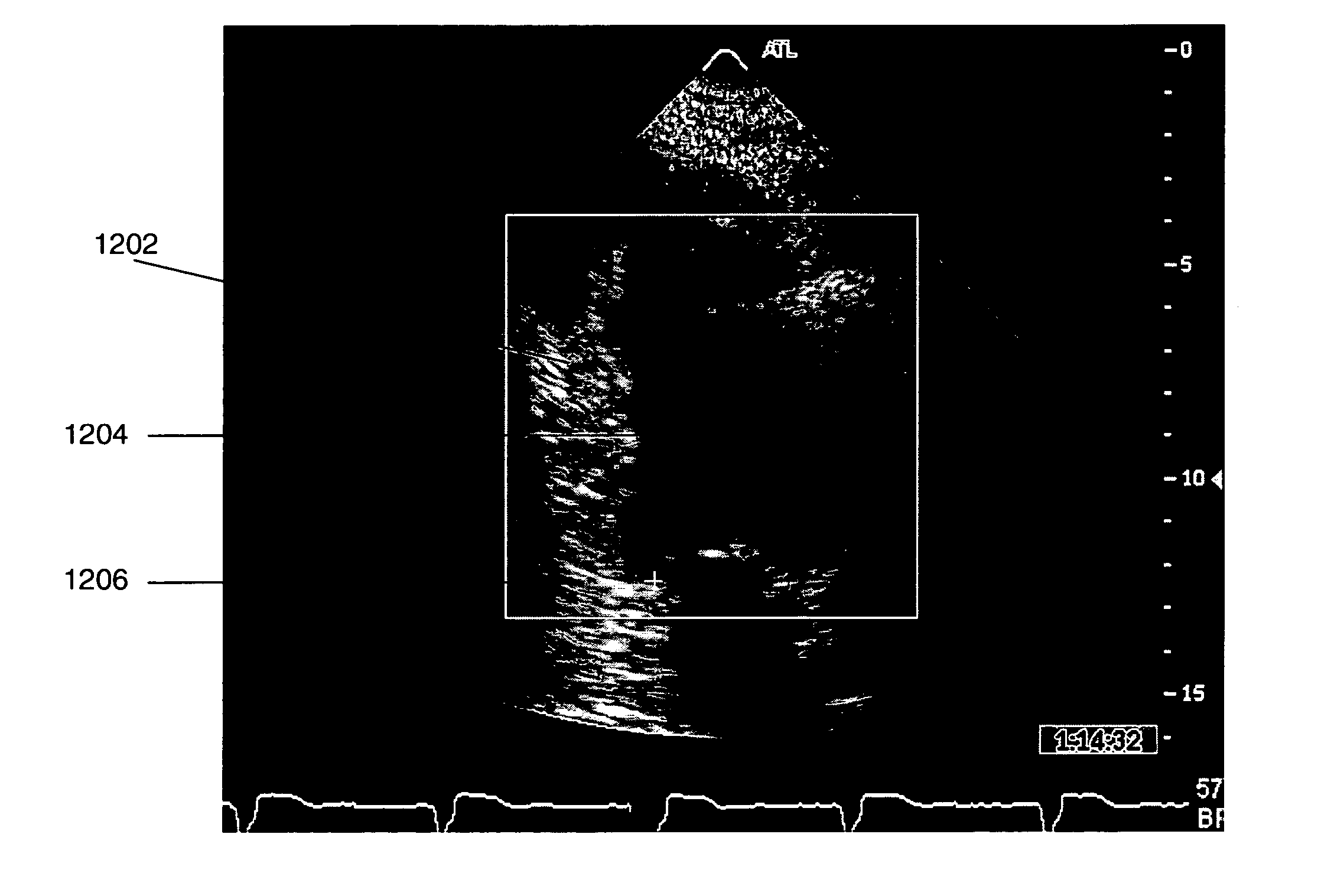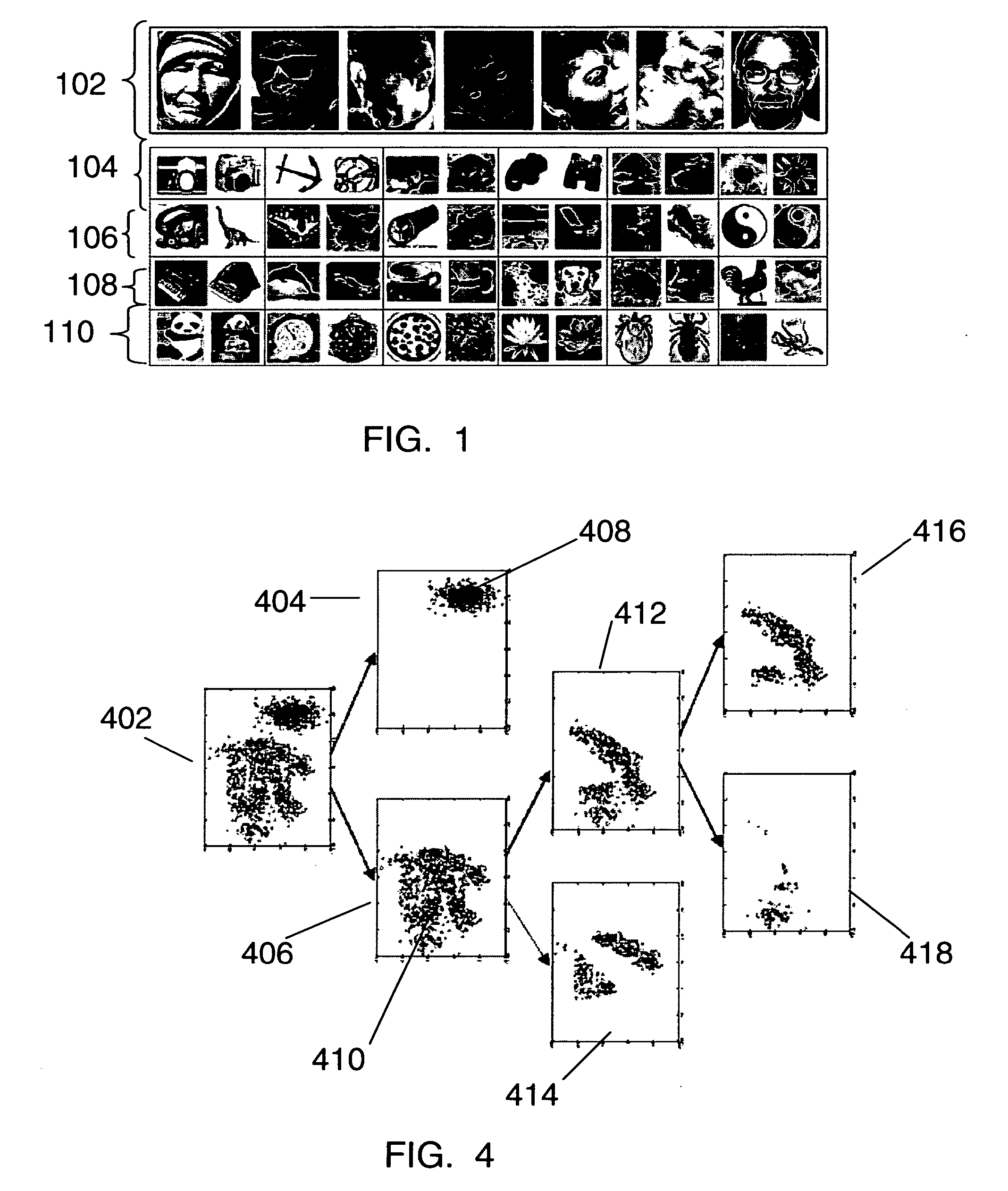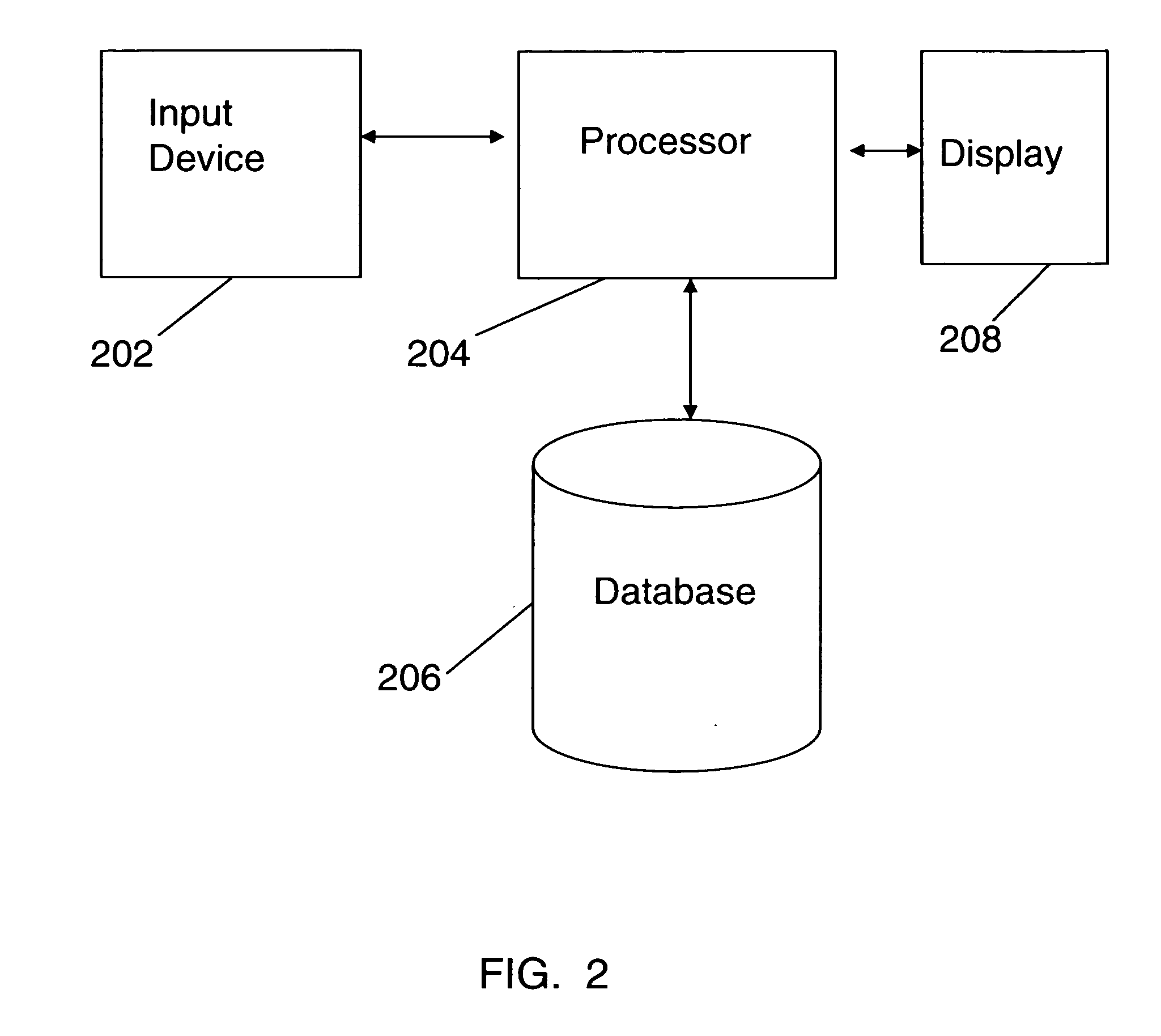Probabilistic boosting tree framework for learning discriminative models
- Summary
- Abstract
- Description
- Claims
- Application Information
AI Technical Summary
Problems solved by technology
Method used
Image
Examples
Embodiment Construction
[0031] The present invention is directed to a probabilistic boosting tree framework for computing two-class and multi-class discriminative models. In the learning stage, the probabilistic boosting tree (PBT) automatically constructs a tree in which each node combines a number of weak classifiers (e.g., evidence, knowledge) into a strong classifier or conditional posterior probability. The PBT approaches the target posterior distribution by data augmentation (e.g., tree expansion) through a divide-and-conquer strategy.
[0032] In the testing stage, the conditional probability is computed at each tree node based on the learned classifier which guides the probability propagation in its sub-trees. The top node of the tree therefore outputs the overall posterior probability by integrating the probabilities gathered from its sub-trees. Also, clustering is naturally embedded in the learning phase and each sub-tree represents a cluster of a certain level.
[0033] In the training stage, a tree...
PUM
 Login to View More
Login to View More Abstract
Description
Claims
Application Information
 Login to View More
Login to View More - R&D
- Intellectual Property
- Life Sciences
- Materials
- Tech Scout
- Unparalleled Data Quality
- Higher Quality Content
- 60% Fewer Hallucinations
Browse by: Latest US Patents, China's latest patents, Technical Efficacy Thesaurus, Application Domain, Technology Topic, Popular Technical Reports.
© 2025 PatSnap. All rights reserved.Legal|Privacy policy|Modern Slavery Act Transparency Statement|Sitemap|About US| Contact US: help@patsnap.com



